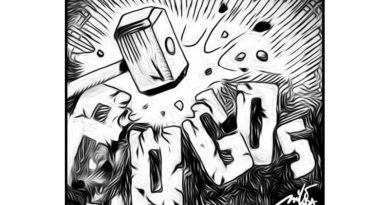COLUMNISTS: HORIZONS- Thailand and PH: A tale of two countries
Lands of serene smiles are often nations with troubled histories. Both Thailand and the Philippines belong to this category of mind-bending paradoxes.
Yet, one of them is lurching, albeit tortuously, toward true freedom, while another, despite its glorious history of liberal reforms, seems trapped in a cycle of self-defeating delusions.
.
During a trip to Bangkok, the royal city with its ornate palaces and vivacious nightlife, I found myself staring at the Chao Phraya River with wonderment. Perched at the balcony of a friend’s apartment, I greedily took in the sight of illuminated boats dancing before the gorgeous skyscrapers and sumptuous restaurants that grace the banks of the river.
Here was a city where man-made concrete lived in visual harmony with nature, where hypermodernity seemed seamlessly entwined with deep-rooted traditions. What’s astonishing is that less than two decades ago, the city seemed just as topsy-turvy as our very own Manila.
Everything changed, however, with a series of ambitious reforms, including big-ticket infrastructure projects with significant Japanese assistance.
Even more impressive is Thailand’s rural landscape, with paved roads, modern irrigation, and universal health care for the peasantry and the poor. Some credit, at least partly, former prime minister Thaksin Shinawatra for such achievements.
.
A business mogul, former police chief, and charismatic populist, Shinawatra was Rodrigo Duterte, Bato dela Rosa, and the Lopezes rolled into one. During his reign, he ably built a welfare state and a massive following, which threatened the country’s establishment, many of whom are similarly of ethnic Chinese background.
As the political scientist Benedict Anderson observed, for half-a-century “almost every Thai prime minister has been a lukchin, like the monarchy itself,” but “this shared ‘Chinese ancestry’ conceals bitter rivalries between the Teochew, Hokkien, Hakka, and Hailamese” ethnic groups.
Close to 80 percent of parliamentary seats in the country have been occupied by people with Chinese ancestry. And just like in the Philippines, the ethnic Chinese minority is also dominant in the economy.
At some point, the populist Shinawatra, with a “Solid North” base, grew so powerful and ambitious that the Bangkok elite wondered whether he would try to supplant the monarchy, which itself replaced a legendary Siamese king called “Taksin the Great.”
In a nation with a turbulent history of 13 successful coups and as many as 20 constitutions, Shinawatra’s remarkable career, which combined technocratic acumen with populist appeal, was predictably cut short. A series of massive protests and coups disrupted both his rule and those of his proxies, including his sister Yingluck’s turn as prime minister.
.
The upshot is a liminal civil war between Thaksin’s “Red shirts” and his Bangkok-centered “Yellow shirts” rivals. The political showdown was perhaps as much about democracy as it was about factional rivalries among competing elites. As Anderson put it, the fight is also “about whether the Teochews get to keep their top position, or whether it’s the turn of the Hakkas or the Hailamese.”
Despite all the chaos, however, Thailand has gradually transformed into a regional industrial powerhouse, the “Detroit of Asia,” and a tourism superpower.
Political economist Walden Bello observed that this is largely because of the country’s relatively robust state institutions, which historically adopted an optimal combination of proactive industrial and trade policy. Competent leadership also helped, exemplified by world-class technocrats such as former deputy prime minister Somkid Jatusripitak.
By the 1980s, Thailand was already pulling ahead of the Philippines, where more than a decade of kleptocratic dictatorship eviscerated a regional powerhouse and drove millions of Filipinos overseas.
Sustained development in Thailand, in contrast, created a highly educated and politically mobilized middle class, which is now not only defying the junta’s curfews but also challenging even the once-untouchable monarchy.
Crucially, the ongoing “people power” protests, largely led by students and teenagers, also show how Thailand is transcending the narrow “Yellow versus Red” political fault lines in favor of true democracy.
.
.
Three decades after its own democratic revolt, the Philippines has not only failed to build an empowered middle class, it is also still haunted by false binaries and feckless leadership. Thailand is where Hegel’s history is marching forward, while its poor neighbor seems trapped in Machiavellian cycles of false hopes and authoritarian temptations.
.


SIGN UP TO RECEIVE OUR EMAIL
.
The most important news of the day about the ASEAN Countries and the world in one email: [email protected]











